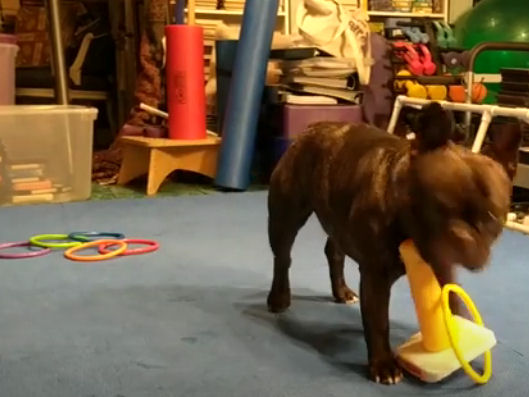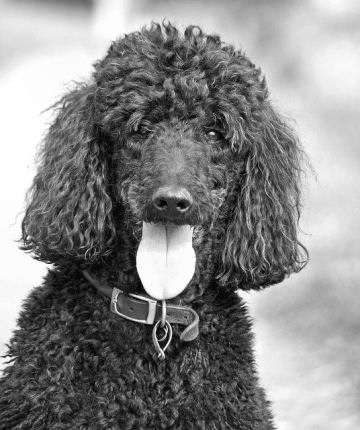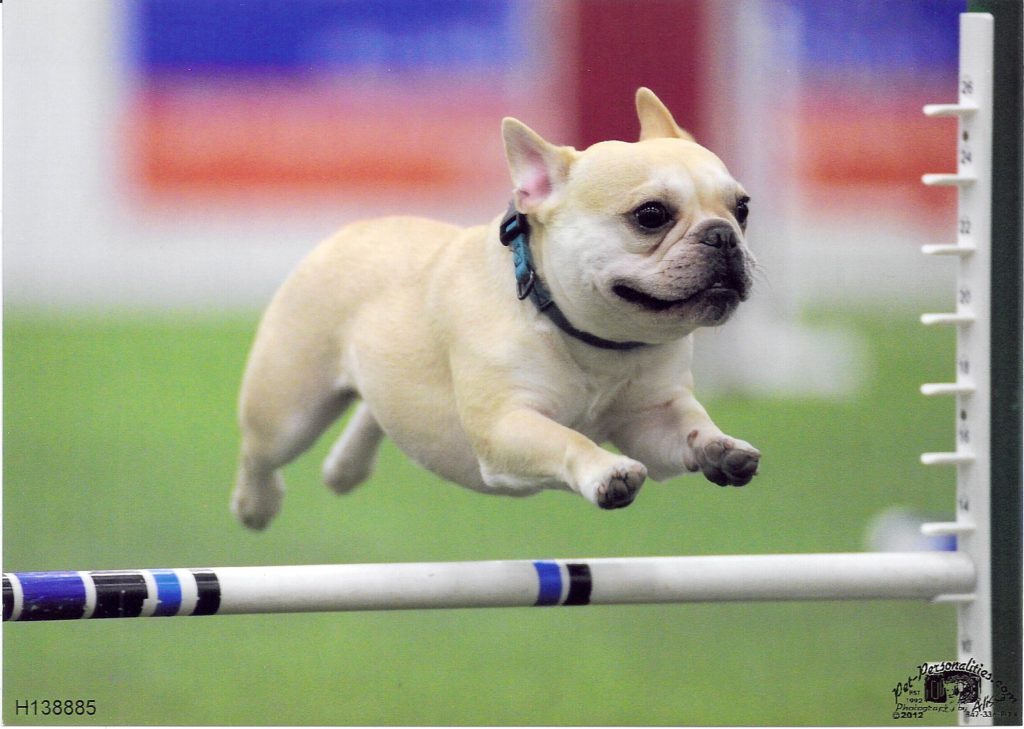
It’s easy to get into a rut. We noticed we were falling into one – always playing the Ring Stacking Game on Mondays, Tuesday it’s Put your Toys Away, etc. It’s time to give a new spin on dog games.
You don’t have to look very far, or vary too much from what you were doing. For example: Simon’s Ring Stacking fell apart this week. He knows the game very well – he’s the only one of our dogs that was absolutely meticulous about getting the rings on the pole exactly right. And persisted until it happened.
Time to shake things up
This week he seemed to either not care, or lost interest. He was grabbing rings randomly, taking them off the pole, not paying attention to what he was doing at all. It could be a case of revisiting the basics to remind him what’s going on. With Simon, though, it’s more likely that he was bored with the status quo.
To shake things up a bit, Fran kept the rings on her arm, rather than laying them on the floor in a pile. She tossed them, one by one, for Simon to retrieve and take to the pole for stacking. And just like that, Simon’s interest in the game reignited. A simple change made all the difference.
Keep the plates spinning
There was an old circus/variety show act about keeping plates spinning. The performer would set dinner plates up on narrow sticks and start them spinning, one after another. By the time he got to about the dozenth, he would have to run back and re-spin the first set. We don’t remember how many were ultimately going around, but it was impressive.
Every skill you and your dog know is one of those plates. If you don’t revisit it, it’s going to lose its momentum and fall off the stick. (We used this analogy before.) Unlike those plates, skills don’t shatter. Your dog can quickly recover proficiency by revisiting the basics.
If you’re competing in dog sports, the skills needed for obedience and rally are specific and don’t allow for much improvisation. But if you’re playing dog games for fun, enrichment, and engagement, be creative!
Freshen up
Once your dog masters a trick or behavior, it’s tempting to stay with it and enjoy the success. But that’s also a way to fall into that proverbial rut.
Seeing how much fun Simon and Fran were having with their variation on the Ring Stacking game, Hope tried a new version with Torque, as well. We’re big on using “stuff” we find around the house and repurposing it in our games. Hope dug out the unused metal ring molds to use for ring stacking.
Instead of having Torque pick them up, she rolled them on their side to let Torque chase them. Instantly, more action and enthusiasm for a game that was getting stale.
Try a new spin on dog games
If you, or your dog, are getting tired of a game, try a minor change. Add motion. Play in a different room. Use a different object. Your dog will find it familiar, with enough of a twist to energize your training. Dogs thrive when the rules of the game are familiar, but there’s a new slant that makes it interesting. And you know how happy dogs get when they succeed. With just some minor tweaking, your dog will have a whole new attitude – and new skills to show off!



